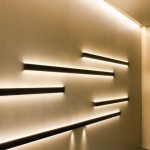Unveiling the Essential Aspects of Recessed Ceiling Lighting
Delving into the world of recessed ceiling lighting can be transformative for illuminating your space. These versatile light fixtures seamlessly integrate into the ceiling, offering a sleek and sophisticated ambiance while providing optimal functionality. Let's explore the key aspects of recessed ceiling lighting to help you make informed choices for your lighting needs.
1. Types of Recessed Lighting
Recessed lighting comes in various forms, each serving a specific purpose. Choose from:
- Gimbal Trim: Adjustable heads allow precise light direction.
- Fixed Trim: Non-adjustable beams for focused illumination.
- Eyeball Trim: A spherical head that pivots to customize light distribution.
- Lens Trim: Diffuses light for soft, even illumination.
2. Recessed Housings
The housing is the structural element that supports the light fixture and connects it to the ceiling. It's crucial to select the right housing size for the fixture and the available ceiling space. Consider:
- Housing Size: Measured in inches, it should match the fixture's dimensions.
- Housing Type: Insulation Contact (IC) for insulation contact or Non-IC for non-insulation contact.
- Trim Compatibility: Ensure the trim you choose fits the housing properly.
3. Light Output and Color Temperature
Light output is measured in lumens and indicates how bright the light will be. Color temperature determines the warmth or coolness of the light, measured in Kelvins (K):
- Warm White (2,700-3,000K): Cozy and inviting ambiance.
- Neutral White (3,500-4,100K): Bright and balanced for task lighting.
- Cool White (4,500K+): Crisp and energizing.
4. Dimmability and Controls
Dimmability allows you to adjust the light intensity to suit different occasions. Consider the following:
- Dimmable Fixtures: Compatible with dimmers for flexible light control.
- Smart Dimmers: Enable voice control and scheduling for added convenience.
- Remote Controls: Provide wireless control from anywhere in the room.
5. Installation Considerations
Installing recessed lighting requires both precision and safety. It's highly recommended to consult a qualified electrician for proper installation. Here are some key steps:
- Determine Fixture Location: Plan the layout to achieve desired illumination.
- Mark and Cut Ceiling Openings: Use a hole saw or drywall saw for precise cuts.
- Mount Housing: Secure the housing in place using screws or brackets.
- Connect Wiring: Ensure secure electrical connections for proper operation.
- Install Fixture: Insert the fixture into the housing and secure it with the trim.

Recessed Lighting Guide Lowe S

A Guide To Recessed Lighting 9 Trim Styles Know

How To Put Recessed Lights In The Ceiling

New Recessed Lighting Dots Dashes Lightology

Modern Recessed Lighting 2modern

Wafer Lights Vs Can Everything You Should Know

The Pros Cons Of Recessed Lighting For New Construction

Recessed Lights Features And Advantages The Constructor

Recessed Lighting Guide The Home Depot

Guide System Gineico Lighting
Related Posts








